If you’ve stumbled upon a surprise in your pet bird’s cage—an egg—chances are you’re filled with questions. Whether you’ve always believed your feathered friend to be male or never provided a mate, the sudden appearance of pet bird eggs can leave even the most seasoned pet bird owners scratching their heads. In the domain of bird care, discovering your pet bird laying eggs entails a unique set of considerations and practices to ensure both the well-being of your bird and proper egg handling.
Regardless of whether the egg is a result of your bird reaching reproductive maturity, or it’s being spurred on by environmental cues within your home, it’s critical to navigate through bird egg care with attentiveness and informed action. Understanding what stimulates this behavior, knowing how to manage it, and recognizing what it entails for your pet bird’s health are pivotal facets of pet bird egg care.
From the inception of egg-laying to the potential of incubating or discarding the eggs, this guide is designed to walk you through the steps of caring for a pet bird that has begun to lay eggs. As you continue to provide a loving home for your winged companion, being equipped with the proper knowledge and resources is the cornerstone of responsible pet bird ownership.
Understanding Pet Bird Egg-Laying Behavior
While the presence of an egg in your pet bird’s cage might startle you, it’s a natural process tied to deeper hormonal changes in birds and various environmental cues. Grasping the underlying reasons for this occurrence and how it differs from bird egg laying in the wild will aid you in providing the best care for your avian companion.
The Role of Reproductive Maturity in Birds
The commencement of egg-laying in your pet bird marks a significant point in its life – it signifies that it has reached reproductive maturity. This typically occurs when the bird is ready, both physically and hormonally, to produce offspring. In a captive environment, however, the presence of hormonal changes can instigate this process even without the traditional requisites found in nature.
Stimulating Factors for Egg Laying in Captivity
In the comfort of your home, your bird may encounter several stimulants that unwittingly encourage egg-laying syndrome, regardless of actual breeding intent. Abundant food, particularly those high in fat and protein, mimics the surplus found in nature, priming birds for reproduction. Other factors include the attachment to what the bird perceives as a mate, which could be anything from a beloved toy to a reflection in the mirror, and certain physical interactions that simulate bird breeding behaviors.
Differences Between Wild and Domestic Bird Egg Laying
Wild birds are influenced by the cyclical rhythm of nature, where conditions like ample daylight, food supply, and the availability of a mate play pivotal roles. Conversely, pet birds may lay eggs due to the stable and often unvarying conditions provided indoors. Understanding these distinctions is key to managing your pet bird’s health and preventing excessive egg-laying that can lead to health complications.
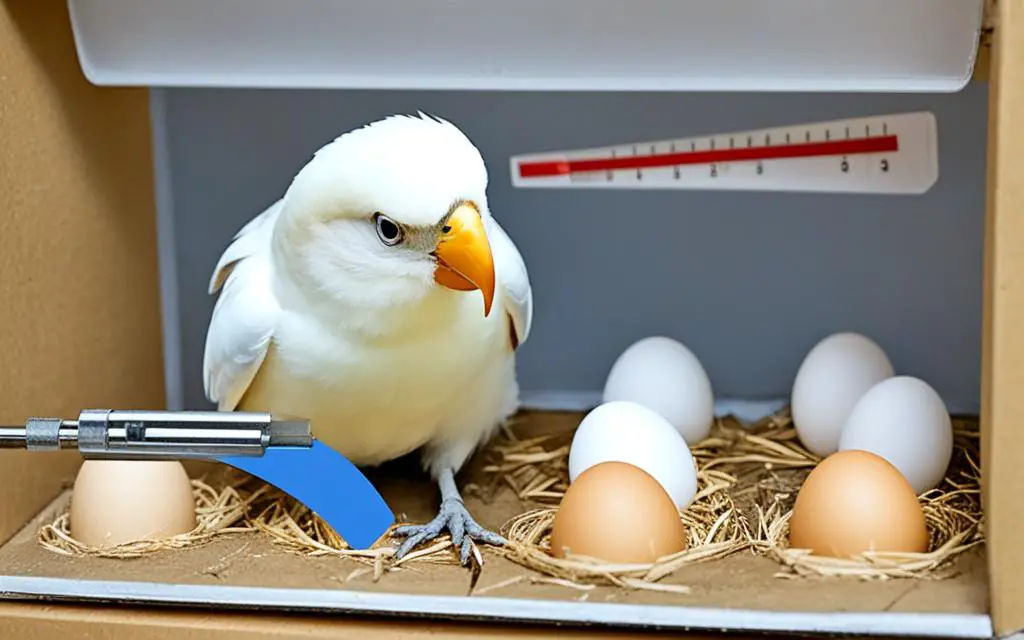
As a caring pet owner, your awareness of these factors allows you to create a supportive environment for your bird while mitigating any unwanted egg-laying behavior. By monitoring their diet, social interactions, and surroundings, you can help maintain their health and happiness, whether they’re in the breeding season or not.
Identifying Eggs: Fertile or Unfertilized?
When you find eggs in your pet bird’s cage, you’re faced with an interesting mystery: Are these fertile bird eggs, or are they unfertilized? The distinction is all about whether your female bird has had an opportunity to mate with a male. Without this encounter, the eggs she produces will not hatch.
Candling bird eggs is a time-honored method that can shed light—quite literally—on the fertility status of an egg. By using a bright light source, you can observe the interior of the egg without breaking its shell. If the egg shows signs of development, such as visible veins or an embryo, it could potentially be fertile. However, if the contents of the egg appear clear or with an undefined yolk, it’s likely unfertilized.
For those who are exploring where to buy bird eggs for breeding or educational purposes, it is important to ensure that the eggs come from a reputable source that guarantees their fertility. Many specialty pet stores and professional breeders sell fertile bird eggs ready for incubation, but always verify the credibility of these sources to avoid disappointment.
Handling the eggs correctly is crucial, and if there’s any question about their fertility or if you notice anything unusual during the egg-laying process, it’s essential to consult an avian veterinarian. They can provide guidance on the correct steps to take, ensuring the health and safety of your bird. Below is a helpful table summarizing key points to remember about egg fertility and candling:
| Characteristic | Fertile Egg | Unfertilized Egg |
|---|---|---|
| Egg Appearance | Development signs (veins/embryo) | Clear or unfocused yolk |
| Candling | Illuminates development stages | Shows consistency of contents |
| Purchase | Buy from certified sources | Typically not sold |
| Next Steps | Possible incubation required | Often discarded or left with the bird |
In any case, the well-being of your pet bird should remain a priority. Whether choosing to incubate fertile eggs or manage unfertilized ones, remember to provide a nurturing environment for your avian friend to thrive.
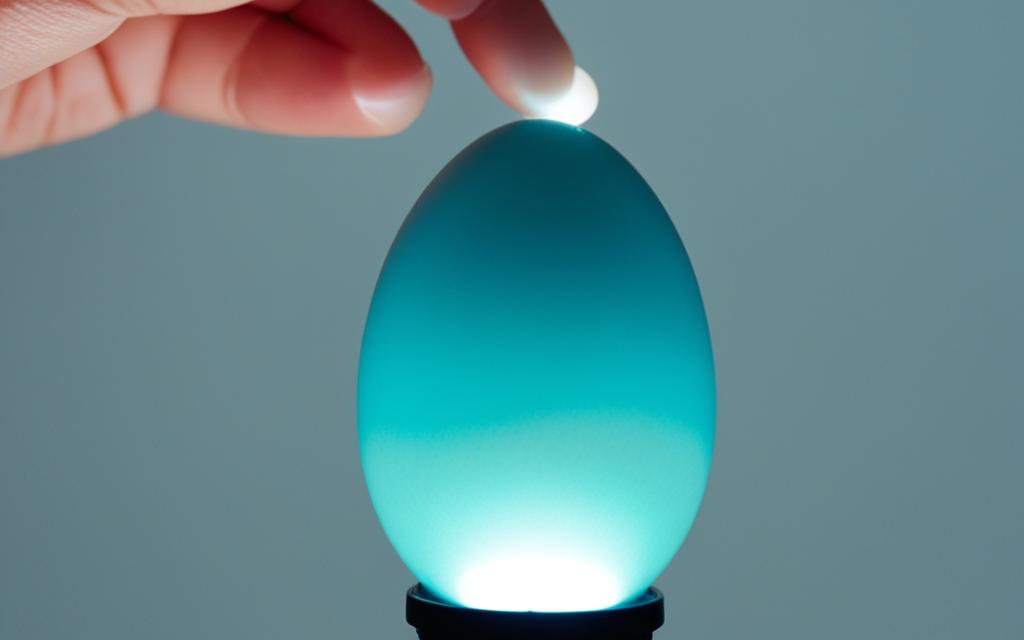
Initial Steps to Take with Freshly Laid Pet Bird Eggs
Discovering a freshly laid egg in your bird’s cage may lead to a flutter of excitement and some concern. The first thing to do is determine the potential fertility of the egg. If there’s a chance of the egg being fertile, you may be on your way to welcoming new chicks into your family. However, more often than not, eggs laid by single pet birds tend to be unfertilized. At this juncture, effective bird egg removal is important to manage your bird’s health and laying cycle.
For infertile eggs, consider bringing in fake bird eggs. By replacing the real eggs with these imitations, you can prevent your pet from laying more eggs in an attempt to replace what they perceive as a lost clutch. This is a recognized method to help regulate your bird’s reproductive behavior without causing distress.
Your bird might begin to nest or show incubating behavior. In this case, allow about three weeks before starting to slowly remove the eggs. This allows your pet bird to realize, on a natural timeline, that the eggs aren’t going to hatch, hopefully preventing further laying. This strategic removal can be key to minimizing stress for your bird while also managing their reproductive behaviors.
During this nesting period, it’s critical to offer the right nutritional support. Consulting with an avian veterinarian can ensure you provide a diet rich in essential nutrients, especially calcium, to support your bird during this potentially taxing process.
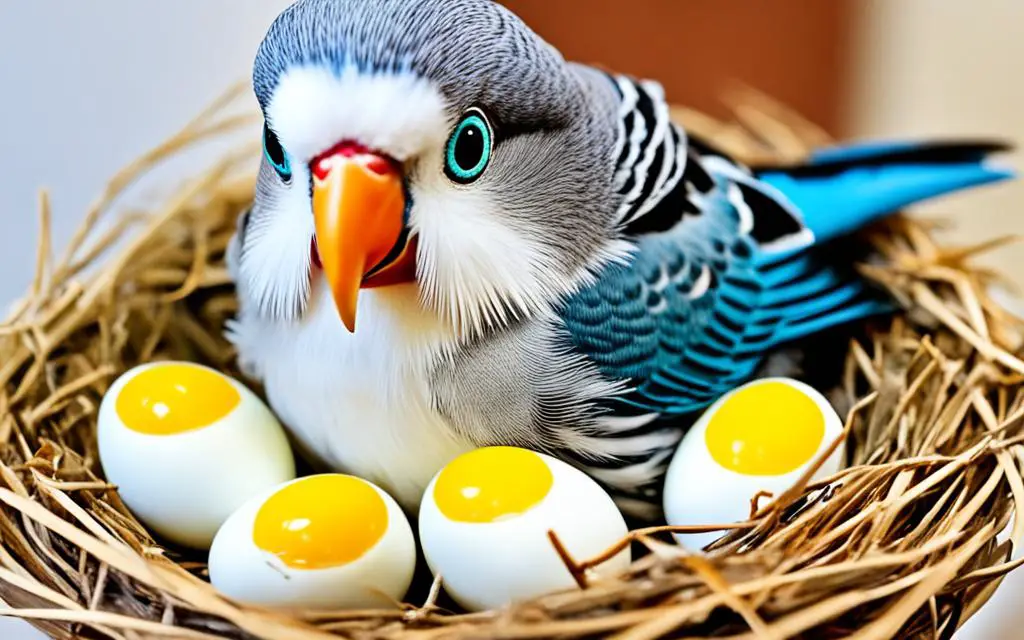
Remember, while it may be surprising to find an egg, it’s a natural occurrence for your feathery friend. With careful observation and thoughtful care, you can support your pet through this phase while steering clear from the complications of excessive egg laying. Heed the advice of veterinary experts and embrace the use of fake bird eggs as a compassionate approach to managing your bird’s maternal instincts.
Incubating or Discarding: What Are Your Options?
When it comes to handling the eggs your pet bird has laid, you’re presented with two primary options—either you will lean towards bird egg incubation if they are fertile or consider discarding them to prevent bird breeding. The subsequent decision can significantly affect your bird’s health and wellbeing, not to mention your involvement as a pet owner in the nurturing process that bird egg hatching entails. Here’s a guide to help you navigate the options available to you.
Replacing Real Eggs with Fake Eggs
If bird breeding is not your intention, employing fake eggs can be an effective technique. These replica eggs can prevent bird breeding by discouraging your pet from laying more eggs, thus avoiding the health risks associated with excessive laying. Moreover, these faux eggs help to stabilize the bird’s hormonal cycle without causing undue stress or anxiety.
Approach to Incubating Fertile Bird Eggs
Should you opt for bird egg incubation, nurturing fertile eggs to the hatching stage, you’re stepping into a role of active participation. This may entail placing the eggs back under the bird’s care or, should the natural parent be unavailable, the meticulous use of an incubator. Careful temperature and humidity monitoring will be essential to ensure proper development and successful hatching.
Techniques for Discouraging Further Egg Laying
Even if you’ve mastered the art of handling the immediate situation, it’s essential to take proactive measures to prevent bird breeding and further egg-laying. This can be achieved by altering your bird’s environment, which includes revamping the cage setup and modifying daily routines. Let’s delve into the techniques that can help manage your bird’s reproductive instincts:
| Technique | Application | Expected Outcome |
|---|---|---|
| Environment Alteration | Change the location of the cage, rearrange perches and toys. | Less perceived stability for nesting, reduced egg laying. |
| Mate Reduction | Remove items associated with mating, limit ‘mate-like’ interactions. | Decreases likelihood of breeding behavior and egg production. |
| Light Adjustment | Reduce the amount of light exposure to mimic non-breeding seasons. | Signals to bird that it is not the optimal time for reproduction. |
By incorporating these strategies, you not only promote a healthy balance in your pet bird’s life but also crucially mitigate the risks associated with unwanted egg laying.
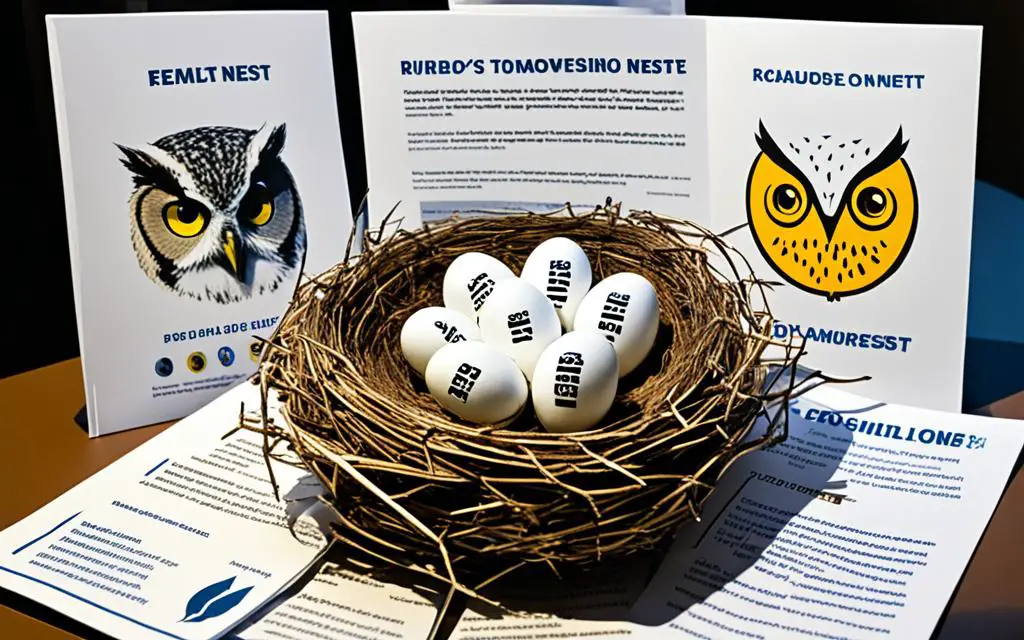
Handling Hormonal Changes in Pet Birds
When you notice your pet bird engaging in excessive egg laying, it’s important to understand that behind this behavior are significant hormonal changes influenced by your bird’s diet and environment. By managing these factors, you can help maintain your bird’s health and regulate its reproductive cycle.
Impact of Diet on Bird Hormone Levels
A bird diet rich in fats and proteins may contribute to hormonal fluctuations that trigger egg laying. To combat excessive egg laying in birds, consider adjusting their diet to include more balanced nutrients. This might mean limiting high-fat seeds and offering a variety of fruits, vegetables, and specially formulated pellets that better replicate the nutritional balance found in a bird’s natural habitat.
Environmental Changes to Mitigate Hormonal Triggers
Environmental cues play a big role in a bird’s reproductive behavior. Modifying the light exposure to reflect shorter daylight hours can signal to your bird that it isn’t breeding season, which may discourage egg laying. Additionally, changing the setup in your bird’s cage or rearranging their living space can reduce the comfort levels that often lead to nesting behaviors.
Another key factor to consider is the presence of items in the cage or living space that your bird might associate with a mate or nesting. Removing these can help mitigate the hormonal triggers associated with breeding behaviors. Taking these steps can make a significant difference in managing your bird’s hormonal changes.
When to Consult an Avian Veterinarian
Despite your best efforts, there might come a time when you’ll need to consult an avian veterinarian. If you notice signs of health issues related to hormones, such as egg binding, or if your bird continues to lay eggs excessively, professional advice is essential. An avian veterinarian can offer personalized recommendations on diet amendments, supplemental lighting, or even hormonal treatments to help regulate your bird’s reproductive cycle.
It’s important to keep an open line of communication with your vet and to seek guidance as soon as you notice any concerning changes in your pet bird’s behavior or health. Your veterinarian’s expertise is invaluable when it comes to ensuring the long-term well-being of your avian companion.
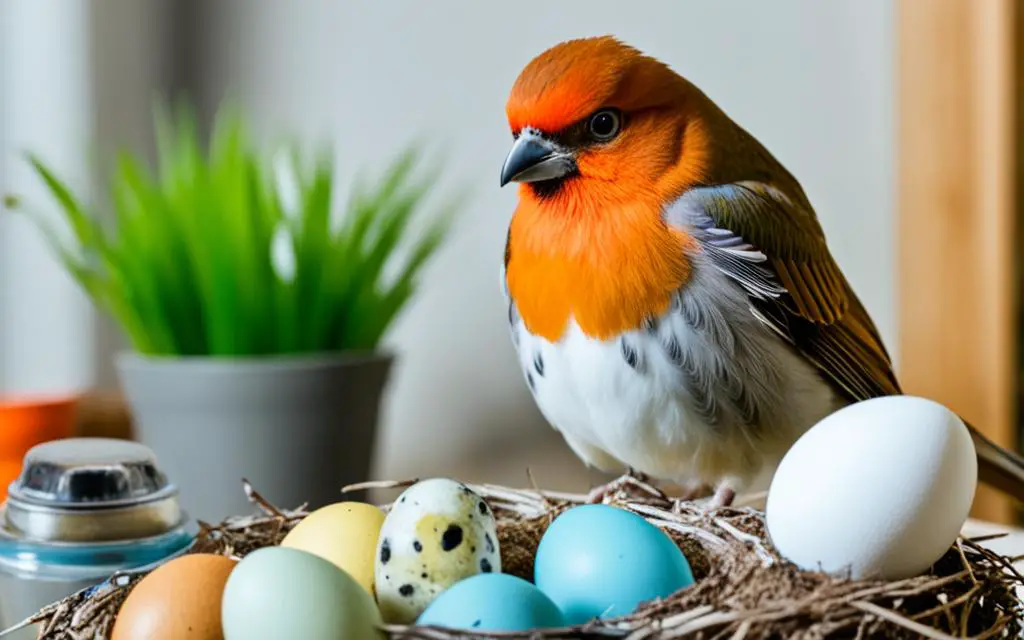
Egg Binding in Pet Birds: Causes, Symptoms, and Treatment
If your beloved feathered companion is exhibiting signs of egg binding, it’s crucial to recognize this condition’s seriousness. Egg binding in birds is a life-threatening scenario where a bird is unable to pass an internally developed egg. This ailment demands immediate attention as it can lead to severe infection or death if not promptly treated.
Nutritional deficiencies, particularly a lack of calcium, are often at the root of egg binding issues. Hormonal imbalances and physical exhaustion from continuous egg laying can also contribute to this condition. Birds in good health and optimal physical conditions are less likely to experience egg binding, making bird health and egg laying an interconnected concern.
Early signs of egg binding might be subtle and easy to miss. You might notice a lack of energy or a slight change in your bird’s posture. As the condition progresses, the symptoms can intensify, leading to visible discomfort, a swollen abdomen, or even paralysis. These signs can signal an emergency situation requiring swift veterinary intervention.
Treatment of egg binding generally includes veterinary assistance, and in severe cases, may depend on surgical intervention to remove the entrapped egg. Undergoing surgery is a delicate process, necessitating an experienced avian veterinarian. Such drastic measures underline the critical nature of preventing egg binding before it arises.
Prevention is multi-faceted: it includes ensuring your bird has a calcium-rich diet to support eggshell development and possibly altering its environment to reduce the stimuli that lead to repetitive egg-laying. Managing these elements can discourage your bird from overproducing eggs, thereby mitigating the risks of egg binding.
In summary, observing your bird closely and keeping its lifestyle in line with practices that promote bird health and egg laying can be the most straightforward guard against egg binding. Be vigilant for any signs of egg binding and maintain open communication with your avian veterinarian to ensure the health and happiness of your winged companion.
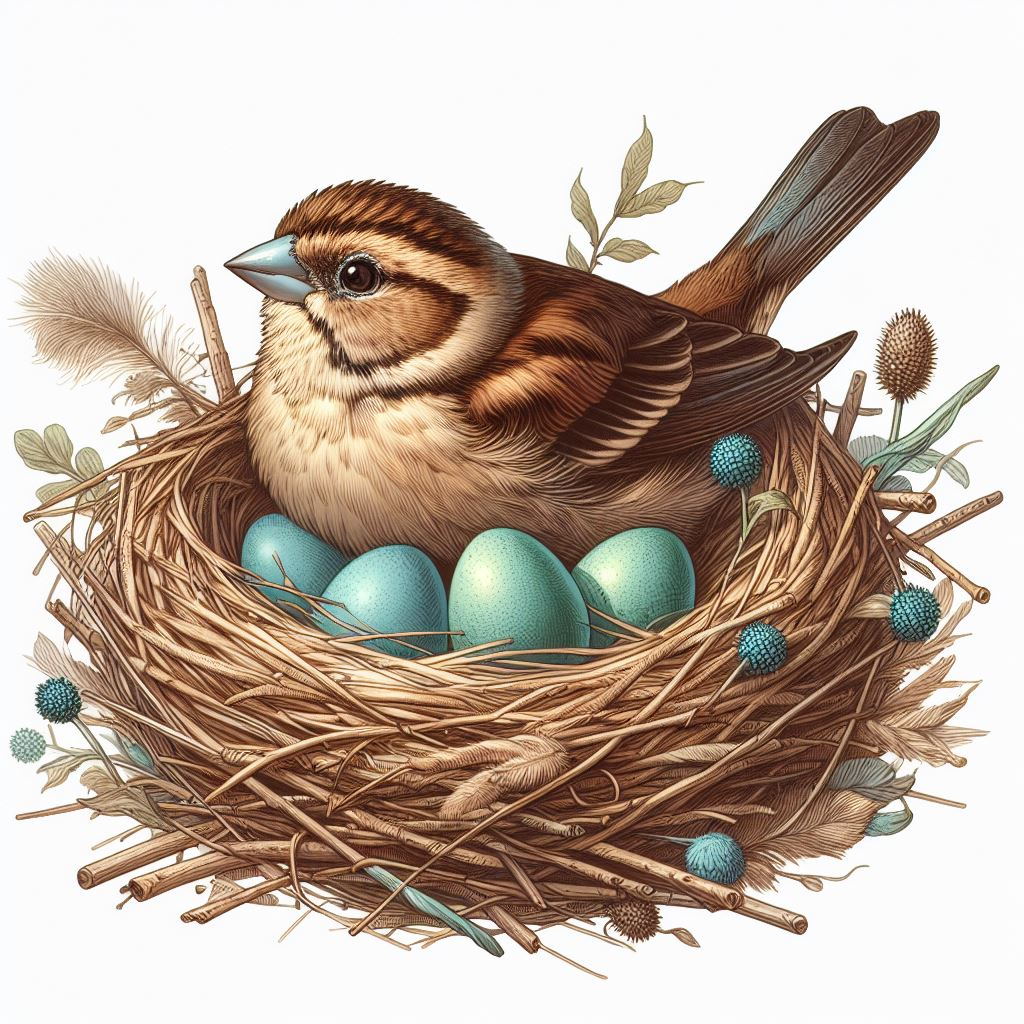
Providing Proper Nutrition During Egg-Laying
As you delve into the reproductive life of your pet bird, it’s crucial to focus on nutrition – particularly when it comes to egg laying. This phase demands heightened nourishment to not just fortify your feathered companion but also to prepare for the potential demands of raising baby birds. It’s during these times that a careful watch for calcium deficiency in birds becomes even more important.
Calcium Supplementation for Egg-Laying Birds
The spotlight on calcium arises due to its pivotal role in both the formation of healthy eggshells and the bird’s physiological health. Insufficient calcium can spiral into a series of health issues, potentially culminating in egg binding, a condition you want to thwart at all costs. Augmentation of the bird diet with calcium sources such as cuttlebones or mineral blocks steers clear of such deficiencies. When natural intake falls short, incorporating vet-approved calcium supplements is a smart move.
The Importance of a Balanced Diet
Yet, just topping up on calcium isn’t the end-all. Balancing the diet is what spins the wheel for a comprehensive nutritional profile. Tailoring your bird’s nourishment, especially during egg laying, safeguards against health risks and fosters overall vitality. A balanced diet is synonymous with fewer health risks, and this balance beams down notably on the wellbeing of both your bird and its potential chick’s embryonic development.
Appropriate Food Choices for Egg-Laying Birds
With the aim to nourish, what then enters the feeder is of essence. During egg laying, the bird diet can include specially formulated pellets, seeds, fruits, and vegetables rich in nutrients. Swerve away from over-reliance on a single food category; diversity is key. For those prepping for the first flaps of raising baby birds, a considerate plate champions a robust initiation into life.
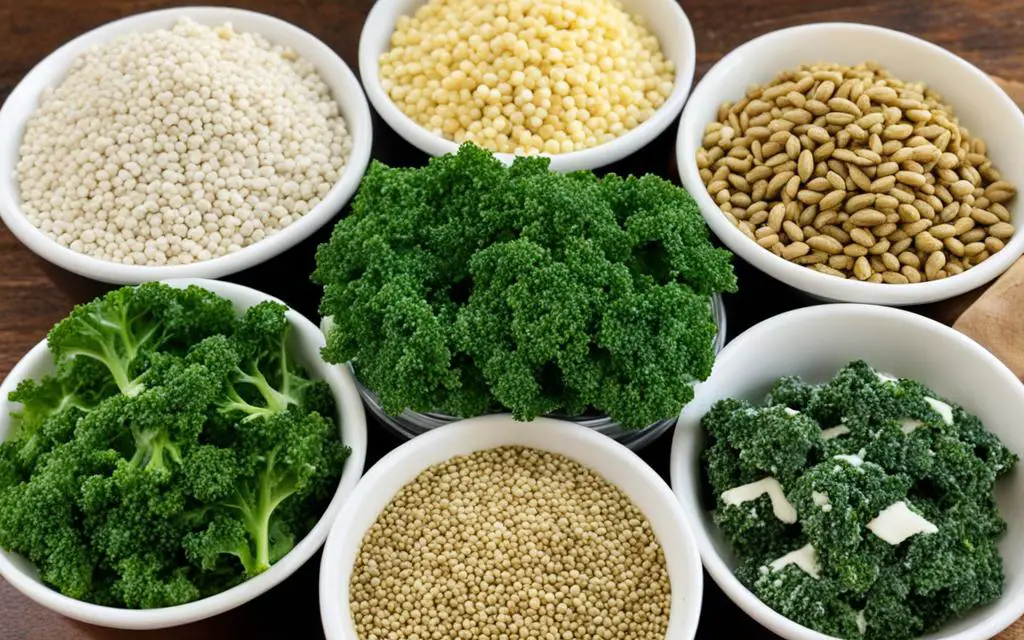
To bestow you with an insightful peek, here’s a table with recommended dietary inputs:
| Nutrient | Benefits | Food Sources |
|---|---|---|
| Calcium | Strong eggshells, skeletal health | Cuttlebone, leafy greens, calcium supplements |
| Vitamins | Overall health, egg development | Pellets, fruits, vegetables |
| Protein | Muscle growth, chick development | Legumes, cooked eggs, quality seed mix |
Renewing your avian friend’s meal plan with an eye for calcium, vitamins, and proteins not just serves an immediate need but pens a narrative of continued health and vitality during the egg-laying saga. So, as the tiny lifeforms gear up within their shelled domes, understanding and supplying the right bird diet becomes a testament to your care and dedication as a pet parent.
Creating an Unsuitable Environment for Egg Laying
If you’re seeking to discourage bird egg laying and curb unwelcome aspects of bird breeding within your home, it’s essential to adjust your pet bird’s environment. Alterations focused on making the habitat less conducive to breeding can help prompt significant bird behavior changes and reduce the frequency of egg laying. Let’s explore how to create a setting that is more about comfort and less about nesting.
Adjusting Cage Location and Composition
Moving your bird’s cage to a new spot can be a subtle yet effective way of deterring egg laying. Choose areas that don’t resemble the quiet, secluded spots birds seek out for nesting. By rearranging the interior setup of the cage—shifting perches, toys, and feeders—you can disrupt the familiarity that often encourages reproductive behaviors. The goal is to keep your bird pleasantly engaged without the comforts of a stable breeding ground.
Altering Light and Temperature Conditions
Birds are sensitive to light and temperature—both powerful cues in their natural reproductive cycles. To discourage egg laying, you can mimic the shorter days and cooler temperatures of non-breeding seasons. This may involve covering the cage earlier in the evening and avoiding bright, direct light that mimics the spring and summer daylight hours known to trigger breeding instincts.
Minimizing Nesting and Mate-Associated Behaviors
To diminish nesting inclinations, remove any materials or objects that your bird associates with being a mate or creating a nest. These can range from mirrors and cozy fabric items to specific toys that the bird might see as a companion. Additionally, be mindful of your interactions; avoid behaviors like petting your bird in ways that could be interpreted as mating rituals. Balancing affection with boundaries is key in managing your bird’s instincts.
Remember, consistency in applying these strategies is necessary for them to be effective. With perseverance and patience, you can foster an environment that maintains your bird’s wellbeing while also minimizing the chance of egg laying.
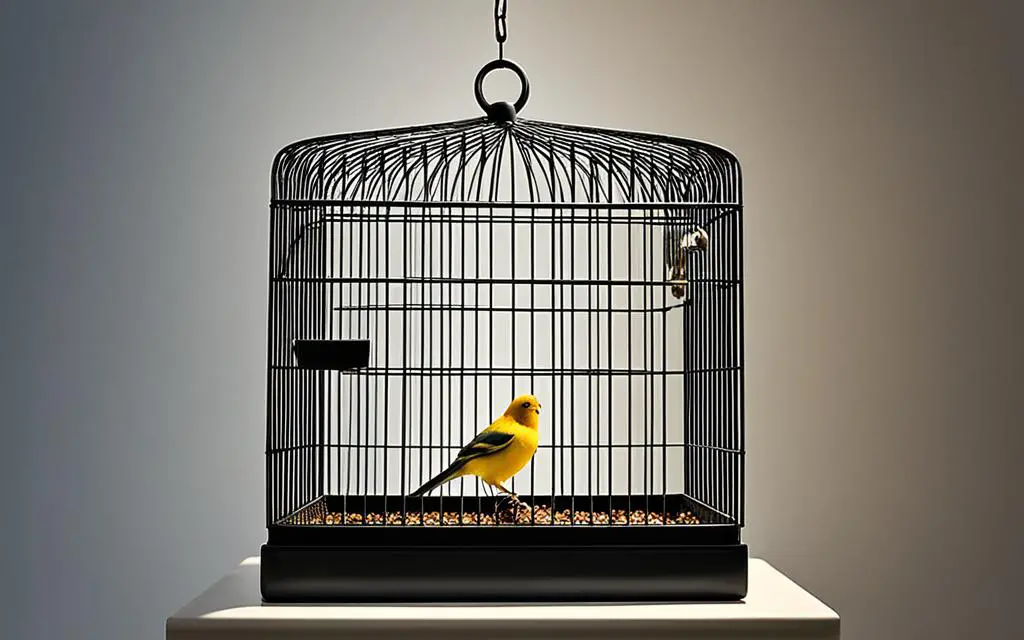
| Strategy | Description | Benefit |
|---|---|---|
| Cage Relocation | Move to a less secluded, more active area. | Reduces the impression of a safe nesting space. |
| Interior Redesign | Rearrange perches, toys, and feeding stations. | Disrupts nesting behavior patterns. |
| Controlled Lighting | Reduce daylight hours and avoid direct sunlight. | Signals non-ideal breeding conditions. |
| Remove Nesting Items | Elimination of materials and objects for nesting. | Less stimulation for nesting behaviors. |
| Mate-Mimicking Behaviors | Limit mating ritual-like activities such as certain petting motions. | Less inclination for the bird to engage in mating behaviors. |
Pet Bird Eggs
As a bird owner, you may face the unexpected event of your bird laying eggs. Besides understanding why this happens and how to handle the eggs, it’s crucial to enrich your bird’s environment and ensure their living space is appropriate to discourage unwanted egg laying. Both environmental enrichment and proper living spaces can play vital roles in managing reproductive behaviors in birds and promoting their overall well-being.
Recognizing the Need for Environmental Enrichment
Bird enrichment activities are not just entertaining for your feathered friends; they’re also a practical approach to managing egg laying. An enriched environment keeps your bird’s mind engaged and body active, potentially reducing the chances of laying eggs. Think of enrichment as a spectrum of activities that cater to your bird’s natural behaviors such as foraging, climbing, and problem-solving. Introducing puzzles, foraging toys, and interactive games will encourage your bird to tap into their inherent instincts and stay physically fit. This stimulation can make all the difference in a healthy, content bird that’s less focused on reproducing.
Ensuring Proper Cage Size and Toys
Proper cage size for birds is another cornerstone of a healthy habitat that can influence egg-laying behavior. A cage that’s too small can lead to stress and a lack of exercise, which may inadvertently trigger your bird’s reproductive system. On the flip side, a spacious cage that allows for free movement, flight, and play can lead to a healthier lifestyle and a happy bird less inclined to lay eggs. When selecting bird toys, it’s important to avoid those resembling potential mates to prevent stimulating mating behavior. Opt for a variety of toys that encourage mental and physical activity without implying companionship.
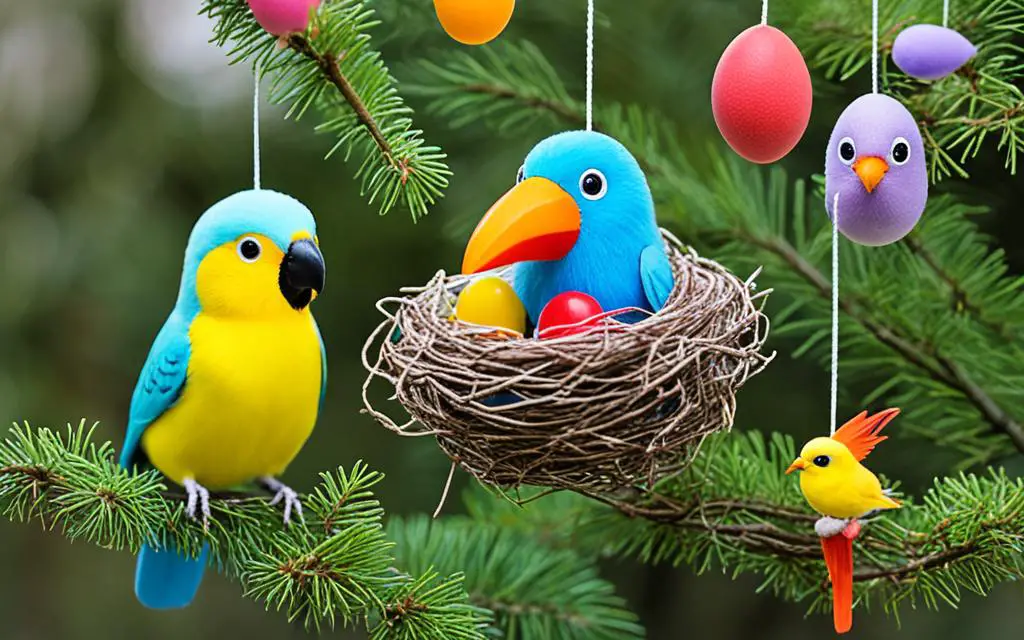
Below is a table offering a glance at how the right environment and toys can impact your bird’s behavior:
| Aspect | Contribution to Enrichment | Impact on Egg Laying |
|---|---|---|
| Foraging Toys | Mimics natural search for food, promotes mental stimulation | Redirects focus from reproductive to survival behaviors |
| Interactive Puzzles | Engages cognitive functions, offers rewards | Keeps the mind active, lessening hormonal drive |
| Exercise Opportunities | Encourages movement and agility | Favors overall health over reproductive condition |
| Proper Cage Size | Allows natural behaviors such as flying and stretching | Provides a less restrictive environment, reducing stress |
| Non-Mate Resembling Toys | Offers playful activities without mate association | Minimizes confusion and curbs mating signals |
By combining the right cage size with diverse, engaging bird toys, you can enhance your bird’s quality of life while naturally regulating their breeding cycles. This harmonious approach not only keeps your bird joyfully occupied but also aligns closely with responsible bird care practices, ensuring your pet remains vibrant and thriving.
Conclusion
Embarking on the journey of responsible pet ownership extends well beyond the joyous moments and into the realm of understanding the intricacies of your pet bird’s needs, including behavior and health concerns related to egg laying. The discovery of eggs in your pet bird’s cage can be a surprising turn in your aviary adventure, but it serves as a reminder of the broader responsibilities that come with bird keeping. Managing egg-laying encompasses a multitude of aspects, from providing appropriate nutrition and environmental adjustments to ensuring your bird’s psychological welfare.
When it comes to bird adoption vs. breeding, adopting may often stand out as the ideal choice for many bird lovers. Through adoption, you contribute to conservation efforts, grant a home to birds in need, and sidestep the complex challenges that come with breeding and egg care. It’s an alternative that not only brings the joy of companionship but also emphasizes the ethos of conservation and responsible ownership. Enjoying your pet bird is fundamentally about creating an environment that supports their well-being, promoting alternative companionship for birds, and nurturing a bond that is enriching for both you and your feathered friend.
In conclusion, responsible pet ownership is the cornerstone of contributing to a healthier, more sustainable world for all creatures. As you explore the fascinating world of avian company, remember that a pet bird enriches your life not merely by their presence but also through the care and understanding you provide. Thus, taking steps to ensure their physical and mental vitality will pave the way for a fulfilling and responsible relationship with your avian companion.
FAQ
What should I do if my pet bird lays eggs?
How can I understand my pet bird’s egg-laying behavior?
How do I know if my bird’s eggs are fertile?
What initial steps should I take when my bird lays eggs?
What options do I have when it comes to incubating or discarding bird eggs?
How should I handle hormonal changes in my pet bird?
What are the causes, symptoms, and treatment for egg binding in birds?
What nutrition should I provide during my bird’s egg-laying?
How can I create an environment that discourages my bird from laying eggs?
Why is environmental enrichment important for pet birds?
Source Links
- https://www.thesprucepets.com/my-bird-laid-egg-will-hatch-390491
- https://animalhouseofchicago.com/news/birds-unwanted-eggs
- https://petjunction411.com/bird-and-parrot-care/what-to-do-when-your-bird-lays-an-egg/

My name is Shane Warren, the author behind Your Bird Buddy – your ultimate guide to the wonderful world of birds! Unleash your inner avian explorer as we delve into a vibrant library of knowledge dedicated to all things feathered. From learning about diverse bird species from across the globe to understanding their captivating habitats and behaviors, I’m here to fuel your passion for these magnificent creatures. Not only that, but I also provide valuable insights on being a responsible and informed pet bird owner. Join our vibrant community and let’s celebrate the feathered wonders of the world together – one chirp at a time. And be sure to join our Your Bird Buddy Community over on Facebook!
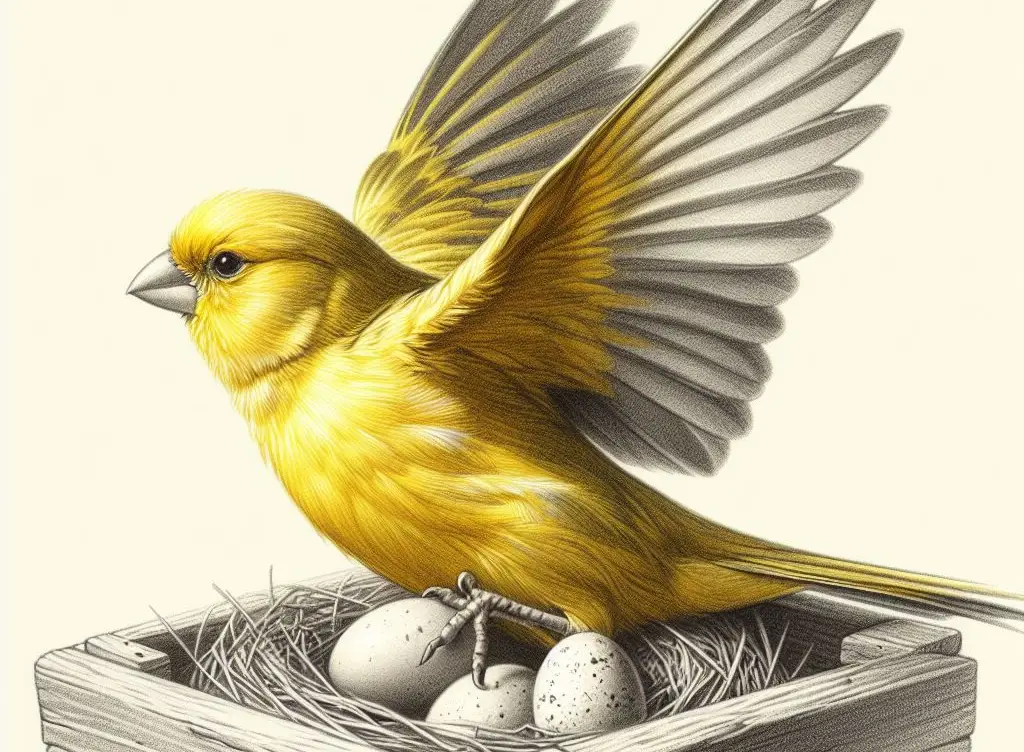

Comments are closed